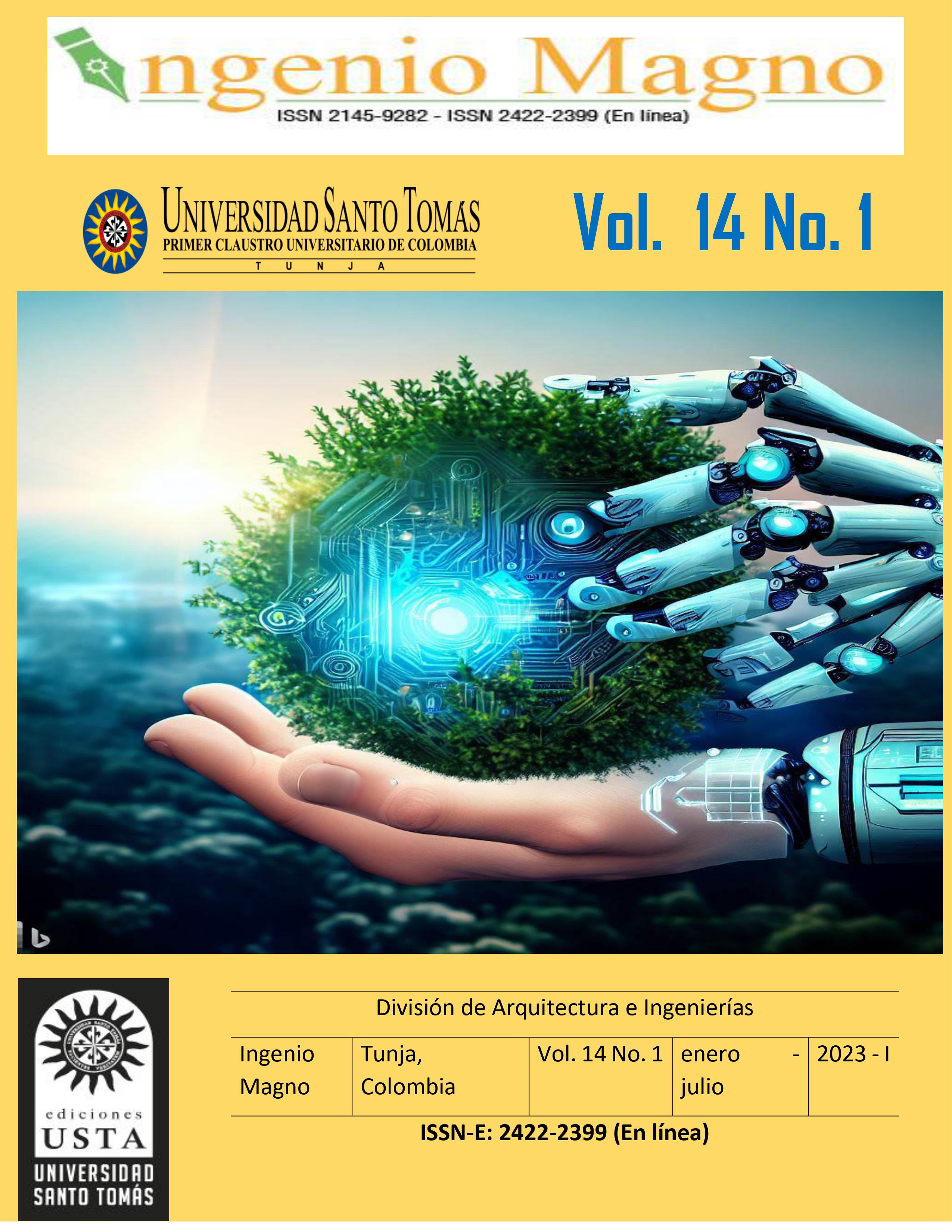Effect of the Cutting Parameters on the Roughness in Dry Turning of AISI 1018 Steel.
Main Article Content
Abstract
Downloads
Article Details
DECLARATION OF ORGINIALITY OF SUBMITTED ARTICLE
With this document, I/We certify that the article submitted for possible publication in the institutional journal INGENIO MAGNO of the Research Center Alberto Magno CIIAM of the University Santo Tomás, Tunja campus, is entirely of my(our) own writing, and is a product of my(our) direct intellectual contribution to knowledge.
All data and references to completed publications are duly identified with their respective bibliographical entries and in the citations thus highlighted. If any adjustment or correction is needed, I(we) will contact the journal authorities in advance.
Due to that stated above, I(we) declare that the entirety of the submitted material is in accordance with applicable laws regarding intellectual and industrial property, and therefore, I(we) hold myself(ourselves) responsible for any complaint related to it.
If the submitted article is published, I(we) declare that I(we) fully relinquish publishing rights of the article to the University Santo Tomás, Tunja campus. As remuneration for this relinquishment of rights, I(we) declare my(our) agreement to receive two (2) copies of the edition of the journal in which my(our) article appears.
References
[2] Cassier, Z., Muñoz, E. ,., Castellanos, C., & Payares. (s.f.). Predicción del acabado superficial de piezas de acero. Revista latinoamericana de Metalurgia y Materiales.
[3] Ciftci, I. (2006). Machining of austenitic stainless steels using CVD multi-layer coated cemented carbide tools. Tribology International, 565-569.
[4] Equbal, A., Equbal, M. A., Equbal, M. I., Ravindrannair, P., Khan, Z. A., Badruddin, I. A., . . . Kittur, M. I. (2022). Evaluating CNC Milling Performance for Machining AISI 316 Stainless Steel with Carbide Cutting Tool Insert. Materials.
[5] Korkut, I., Kasap, M., Ciftci, I., & Seker, U. (2004). Determination of optimum cutting parameters during machining of AISI 304 austenitic stainless steel. Materials and Design, 303-305.
[6] Grupo Tecnología Mecánica, (s.f.). Procesos de fabricación, Rugosidad Superficial. Obtenido de http://www3.fi.mdp.edu.ar /tecnologia/archivos/TecFab/10.pdf
[7] Olsen, K. F. (s.f.). Surface Roughness as a Function of Cutting Conditions when Turning Steel, Machine Tool and Production Trends, Engineering Proceedings, . The Pennsylvania State University, 149-160.
[8] Vishwas, V, G. L., Naik, G. M., B, S., Roy, A., Y, P. B., & Badiger, R. (2018). Effect of Machining Parameters on Surface integrity during Dry Turning of AISI 410 martensitic stainless steel. Materials Science and Engineering.
[9] Wiley, J., & Sons. (2013). Design and Analysis of Experiments. 8a Ed.
[10] Yang, W., & Tarng, Y. (s.f.). Design optimization of cutting parameters for turning operations based on the Taguchi method. J Mater Process Technol. 84:122–129.

